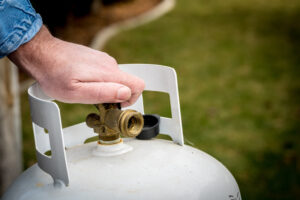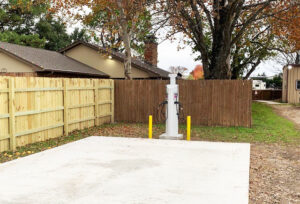Thanksgiving Cooking In An RV November 23, 2020 Thanksgiving is...
Read MoreDIY RV Heat Taping
November 9, 2020
Your first winter in an RV can be exciting or nerve-wracking — the choice is up to you. The amount of preparation you put into preparing your rig will affect how warm and stress-free your winter will be.
RVing can seem idyllic to the outsider, and although a seasoned RVer would agree that RVing is the dream, they also know the amount of preparation that a successful and smooth RV trip requires. During the winter months, if you are not following the warmer weather and instead opt for some snowy adventures, there is an extra level of preparation required because temperatures can drop below freezing. When temperatures get so low, it is harder for your RV to function properly.
Despite the extra level of complexity and preparation required, winter RVing is a wonderful way to participate in your favorite winter outdoor activities in some of the most beautiful places in America!
There are many DIY projects to prepare an RV for below-freezing temperatures, however, this particular blog will cover only heat taping.
Why doesn’t my RV come ready for below-freezing temperatures?
RV’s that are manufactured to withstand cold temperatures are said to have an arctic package. Even among RVs with arctic packages, insulation levels differ. R-value is the term for how thermal resistant the insulation is. Each package will have a different R-Value and different additional perks from the manufacturer.
If you are still in the market for an RV and want an option that will require the least winter DIY projects, Camper Report recommends checking out the following RVs:
- Heartland’s Yeti Extreme Weather Package
- Lance’s Four-Seasons Certified Option (available for travel trailers, toy haulers, and truck campers)
- Keystone’s Four Seasons Living Package
- Northwood’s Arctic Fox Line
- Gulfstream Yellowstone’s Diesel Pusher
- Starcraft’s Launch Ultra-Lite travel trailer
However, if you already have a trusty rig it is time to get to work insulating crucial parts of the vehicle.
What happens if an RV is not prepared for winter?
You can always wear more layers to keep warm. The same is true for your RV, however, you need to put those extra layers on before it gets too cold because DIY RV insulation projects take time.
The main reason that preparing your RV for freezing temperatures is so important is because water freezes when temperatures drop below 32 degrees Fahrenheit. Not only does that mean that water will not run through pipes as you want, but frozen water can cause damage. When water freezes it expands, damaging tubing, hoses, and tanks. Not only will you not be getting the water you need, but you will also likely be cleaning up a major mess in the cold. Not fun! Repairs can be expensive too, so putting time, attention, and investment into preparing your RV will pay off dividends.
What is heat tape?
Heat tape is an affordable and effective way to protect pipes from freezing. Contrary to what the name implies, heat tape is not sticky. It is a heat-conducting, flexible coated wire that creates heat through electricity. It is typically used on pipes in “bricks and sticks” homes to prevent the water from freezing. Because it is so widely used, it can easily be found at the local hardware store near you.
There are two types of heat tape you can use:
Non-regulating: Comes by the foot or in rolls and is easy to use. Because it is non-regulating, it requires you to make sure it does not become a fire hazard as temperatures rise.
Self-regulating: This type of heat tape self-regulates so that as temperatures rise, they change their temperature too. This can also save on power as energy use only increases as temperatures drop. This is the best bet for your RV.
Mobile Home Living recommends also considering the water line material and the electrical system used in the RV when choosing heat tape.
What parts of the RV can it be used on?
The Savy Campers urge RVers to make sure to insulate not just the living space of their RV and internal water systems, but also the external pipes and hoses.
Heat Tape the RV Water Hose: You can apply the heat tape either candy cane style or lengthwise down the hose. Follow the instructions on where to put the thermostat. You can also tape insulating foam pipe tubes securely over the hose and heat tape.
Heat Tape the RV Sewer Pipe: Opt for the self-regulating style of heat tape when heat taping your RV sewer pipe. Make sure the tape does not cross itself to prevent short circuits. The Camping Advisor recommends plugging the heat tape into a GFCI circuit as an additional safety measure. Leave about an inch between each spiral wrap of the tape. The Camping Advisor also recommends insulating with insulating foam piping on top of the heat tape in order to ensure that a particularly cold night does not overpower the heat tape. You can keep the heat tape on all the time, or turn it on prior to a cold night; just make sure that it has enough time to warm up.
Heat Tape for RV Holding Tanks: Heat tape might not work very well on tanks because of the narrow nature of the tape. Heat tape may only do it’s best on plastic or metal pipes. For heating RV holding tanks, try heating pads like this Facon Holding Tank Heater Pad.
With preparation, you will be able to fully enjoy the winter wonderland you are staying in. Keep in mind, heat tape is just the beginning of preparing your RV to face freezing temperatures. There are many other ways to prepare your RV for sub-zero temperatures. Read our article “How To Prepare Your RV for Winter” for the next steps!
You May Also Like
Full-Time RV Lifestyle Tips From The Pros
Your research on full-time RV living is going well. You...
Read More





